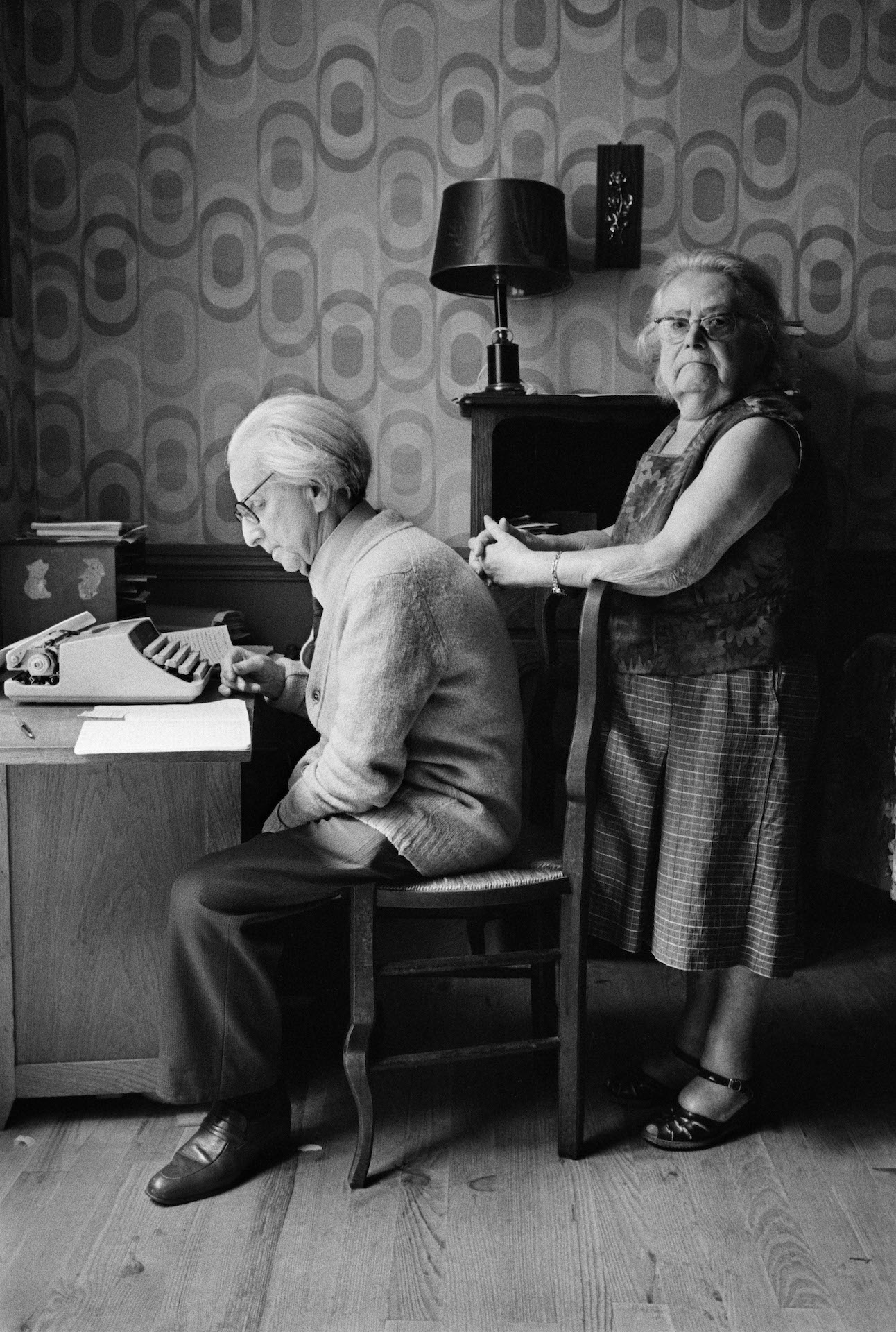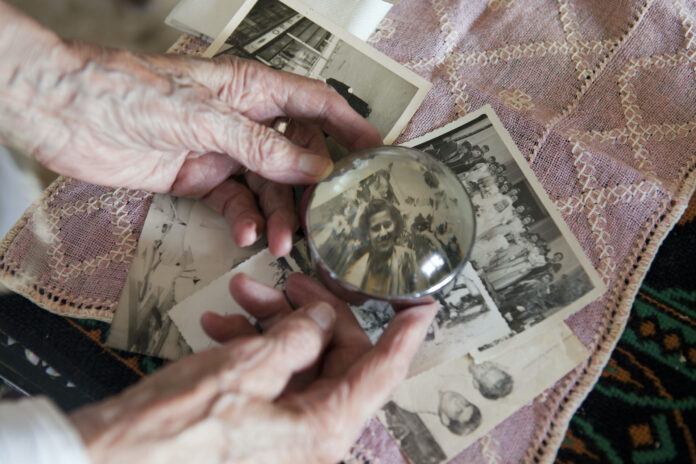If you ever make a trip to Paris, don’t forget to go to the Marais district and stop at the Musée d’Art et d’Histoire du Judaïsme where, until 6 March 2022, Patrick Zachmann’s exhibition is on show. I didn’t know the name or even the work of this photographer, but the curious and shocking exhibition is well worth a visit. It is not the discovery of a great master of contemporary photography as was, for example, the American Waker Evans, dedicated to a crude realism.
A journey around the world with Patrick Zachmann
Patrick Zachmann’s research focuses on his Jewish identity. The proposed itinerary takes the visitor on a journey around the world, from Egypt to Chile, where the photographer went to understand some recent dramatic moments. However, the most relevant part of Zachmann’s research is when he reveals the Jewish world.
The photographer never tries to sublimate the representatives of the universe of the Jews of France. Nor does he want to insist on the picturesque side, despite the presence of images of Orthodox clergymen, with their old-fashioned clothes and traditional hairstyles. They are in their homes or in the street, almost without any particular pose. They are not necessarily beautiful in appearance and are of all ages, ordinary people, with nothing special and sometimes even ridiculous or worthy of anti-Semitic caricatures. However, there are also former inmates of Nazi concentration camps, showing their numbers tattooed on their arms.
The photographer, the Jewish
All of Patrick Zachmann’s shots represent certain ideas of being Jewish, without representing a collection of ‘models’ that exemplify a community. These shots are part of his research into the deeper meaning of Jewishness. The most moving part of this exhibition is certainly the film of a dialogue à bâtons rompus with his father and his emptiness, the loss of memory, the impossibility of finding a word, a date, a fact. The same for his wife and sister. These exchanges are improvised, not designed to draw any historical conclusions.
Through those dialogues the photographer makes it clear that the survivors of the Shoah were almost unable to talk about what they experienced personally; or what their relatives or friends suffered. It is from their silences that we understand the tragedy of this collective massacre.
The shots, the silences: Patrick Zackmann fascinating exhibition
What happened is almost impossible to say. It is not recounted, but is made clear by facial expressions, by lips that suddenly cannot utter a word. In the film, truth is declared by the gaps in the mind that refuses to let anyone know what happened, what was experienced.
The most evocative documents are the large horizontal black and white photographs of the Auschwitz camp barracks submerged in snow. Images of a spectacle wrapped in the heavy silence of nothingness. Nonetheless they can emanate a feeling of anguish, without any didactic intention. Images that only lead one to think about what happened there.
It is a fascinating exhibition because Jewish humanity appears to have no special value, but with a heavy load of meditations on being Jewish, which is revealed here in a thousand faces, a thousand situations, a thousand different forms.
Catalogue : Voyage de mémoire, Patrick Zachmann, MAHJ/Atelier EXB, 224 p., 39 euros.
A Parigi la fotografia per il mondo ebraico
Se mai farete un salto a Parigi, non dimenticate di andare nel quartiere del Marais e fermarvi al Musée d’Art et d’Histoire du Judaïsme dove, fino il 6 marzo 2022, si svolge la mostra di Patrick Zachmann. Non conoscevo il nome e neppure l’opera di questo fotografo, ma l’esposizione, curiosa e sconvolgente merita una visita. Non si tratta della scoperta di un grande maestro della fotografia contemporanea come fu, per esempio, l’americano Waker Evans, dedicato a un realismo crudo.
Un viaggio nel mondo con Patrick Zachmann
La ricerca di Patrick Zachmann si focalizza sulla propria identità ebraica. Il percorso proposto porta il visitatore a viaggiare nel mondo, dall’Egitto al Cile, luoghi dove il fotografo si è recato per capire alcuni recenti, drammatici momenti di quei paesi. Ma la parte la più rilevante della ricerca di Zachmann è quella dove svela il mondo ebraico.
Il fotografo non cerca mai di sublimare i rappresentanti dell’universo degli ebrei di Francia. Non vuole neanche insistere sul lato pittoresco, nonostante la presenza di immagini di religiosi ortodossi, con i loro vestiti d’altri tempi e le tradizionali acconciature. Essi sono nelle loro case oppure per strada, quasi senza posa particolare; anche non necessariamente belli di aspetto e di ogni età; persone ordinarie, senza niente de particolare. A volte persino ridicoli o degni di caricature antisemite. Ma ci sono anche ex detenuti nei campi di concentramento nazisti, mentre mostrano i loro numeri tatuati sul braccio.
Il fotografo, l’uomo ebreo
L’insieme degli scatti di Patrick Zachmann rappresentano alcune idee dell’essere ebreo, senza rappresentare una collezione di “modelli” che siano esemplificativi di una comunità. Si tratta di scatti che fanno parte della sua ricerca sul significato profondo dell’ebraicità. La parte più commovente di questa mostra è certamente il filmato d’un dialogo à bâtons rompus con suo padre e i suoi vuoti, le perdite di memoria, l’impossibilità di trovare una parola, una data, un fatto. Lo stesso per sua moglie e sua sorella. Sono scambi sono improvvisati, che non intendono trarre conclusioni d’ordine storica.
Ma attraverso quei dialoghi il fotografo ci chiarisce che i sopravvissuti della Shoah erano nella quasi impossibilità di parlare di ciò che hanno vissuto in prima persona; o di quello che hanno subito loro parenti o amici. É dai loro silenzi che si comprende la tragedia di questo massacro collettivo.
Gli scatti e i silenzi di Patrick Zachmann
Quello che è avvenuto è quasi impossibile da dire. Non si racconta, ma si fa capire con le espressioni del viso, dalle labbra che, d’un tratto, non possono pronunciare una parola. Nel filmato la verità si dichiara dai vuoti della mente che rifiuta di far sapere quello che è successo, ciò che è stato vissuto.
I documenti i più evocativi sono le grandi fotografie orizzontali, in bianco e nero, delle baracche del campo di Auschwitz sommerse dalla neve. Immagini dell’esibizione di uno spettacolo avviluppato nel silenzio pesante del niente, che però emanano un sentimento d’angoscia, senza alcuna intenzione didattica. Immagini che portano solo a pensare a quello che è successo, lì.
Un’esposizione affascinante perché l’umanità ebraica appare priva di valore particolare, ma con un carico pesante di meditazioni sull’essere ebreo che qui si rivela sotto mille volti, mille situazioni, mille forme diverse.
Catalogo : Voyage de mémoire, Patrick Zachmann, MAHJ/Atelier EXB, 224 p., 39 euro.









